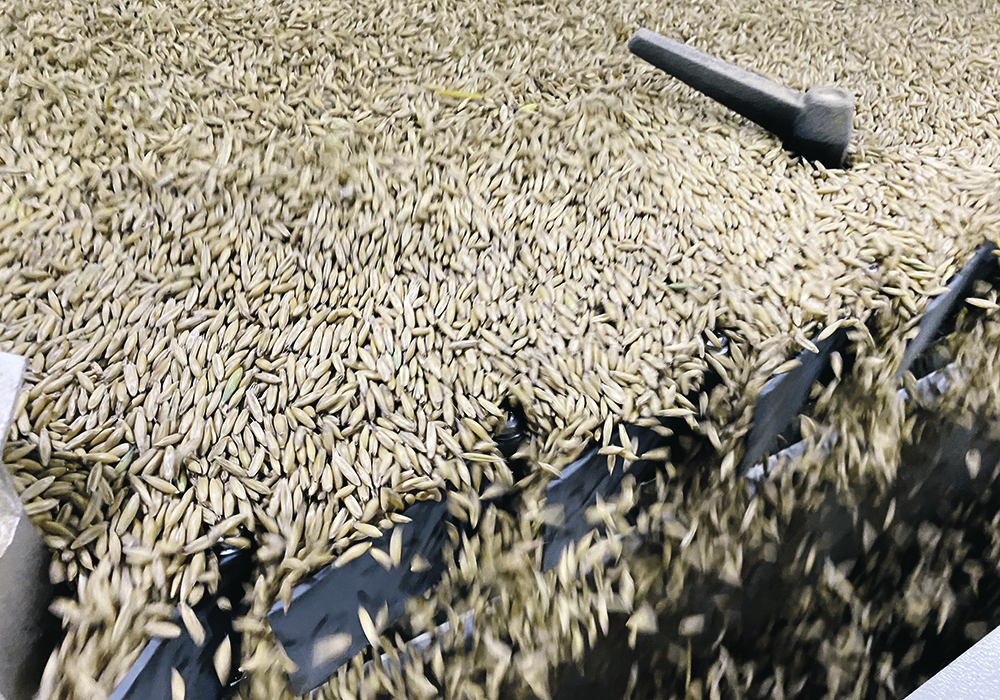Farm Credit Canada report on food manufacturing finds grain and oilseed milling productivity grew by 107.4 per cent
WINNIPEG — When compared to other parts of Canada’s food industry, oilseed crushing is a superstar.
From 2003-23, the productivity growth in grain and oilseed milling was 107.4 per cent.
In comparison, productivity growth in Canada’s dairy processing industry during the same period was only six per cent.
Read Also

U.S. bill could keep out Canadian truckers
The Protecting America’s Roads Act, which was tabled in the U.S. House of Representatives at the beginning of October, would “rid the country of illegal immigrant commercial truck drivers and ineligible foreign nationals.”
Those figures come from a Farm Credit Canada report on food manufacturing in Canada, released in late August.
The report focuses on productivity, which tracks “how well we turn inputs into outputs,” FCC says.
“The most common measure is labour productivity, which measures gross domestic product per hour of work…. Improving productivity can help stabilize the food supply and prices, strengthen businesses and make Canada more competitive in the global market.”
Productivity in oilseed and grain milling jumped significantly because companies invested millions to construct large-scale canola crushing and oat milling plants on the Prairies.
“The grain and oilseed milling industry stands out, doubling productivity in the last 20 years,” FCC says.
“Oilseed crushing grew rapidly over this period, with canola seeds crushed increasing over three times to nearly 11 million tonnes in 2023.”
From 2013-17, Canada’s food manufacturing sector enjoyed a period of strong output with productivity increasing by 11 per cent during the five-year period.

In the last five years or so, productivity growth in the sector has been flat. It dropped 0.66 percent from 2018-23.
The FCC is urging food manufacturers to invest in technologies and innovations to push productivity higher.
“Just as steam, electricity and the internet propelled us to produce more with fewer inputs during previous industrial revolutions, automation, robotics, artificial intelligence and blockchain are shaping up to do the same in food manufacturing in the fourth industrial revolution,” said Amanda Norris, FCC’s senior economist.
“These technologies can improve output and labour efficiency, manage inventory, prevent unplanned downtime, forecast demand, track production and ensure quality control.”
This sort of innovation is easier said than done.
Harvest Meats, which makes sausages, hot dogs, sliced meats and other products in Yorkton, Sask., attempted to invest in robots a couple of years ago.
Geoff Propp, the company’s vice-president and general manager, was seeking a robot that could load a microwave with a frozen block of meat.
“We’ve got two people standing there all day. One guy loads the block on one end, the other guy takes it off…. It’s a perfect application for robot loading,” Propp said in September 2022.
However, companies that sell robotic technology are overwhelmed by the demand, Propp said.
“They’re inundated with guys like me, knocking on their door. Getting someone to just phone you back is almost impossible.”
Norris, in her FCC report, acknowledged that increasing productivity is challenging.
It requires economies of scale, efficiency and innovation, “all working together.”
Still, there are ways to jumpstart productivity, especially in Canada’s fruit and vegetable and speciality food processing, which includes frozen vegetables, baby food and ketchup.
Productivity in that sub-sector declined seven percent from 2003-23.
“(It) is diverse with many small and medium businesses.… (They) are usually labour intensive, dragging down productivity … but have competitive pay and an opportunity to develop innovative products to meet evolving consumer demands across a wide range of product categories,” the report said.


















